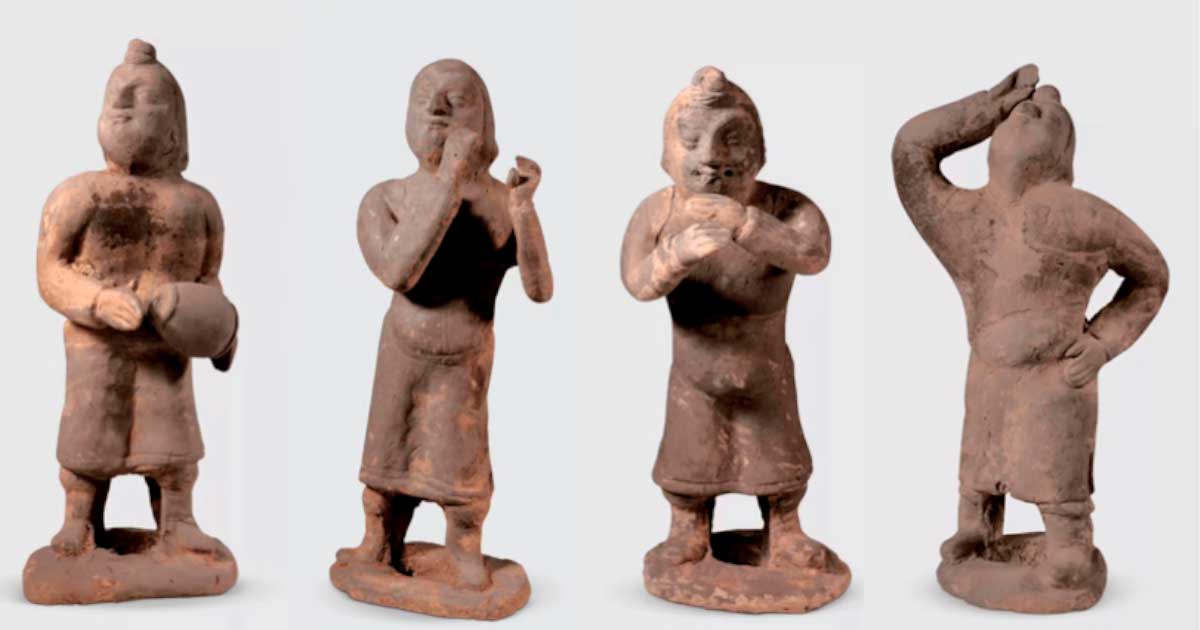Archaeological discoveries can reshape our understanding of ancient cultures, and the recent finds in Datong, Shanxi province, have done just that. The tombs in this region, dated to about 1,500 years ago during the Northern Wei dynasty (386-534 AD), have revealed an impressive array of terracotta figurines, each providing a unique perspective on the customs, social hierarchy, and cultural life of ancient China. These artifacts were discovered in tomb 113 and feature a variety of figures, including musicians, dancers, servants, laborers, animals, and household vessels. They represent a detailed snapshot of the upper-class life and broader social trends of the Northern Wei period.
Upper-Class Burial Practices and Terracotta Traditions
The use of terracotta figurines in burial practices was a common tradition in ancient and medieval China, serving as symbolic companions for the deceased. While the most famous example is the terracotta army buried with Emperor Qin Shi Huang, the Northern Wei dynasty also employed terracotta figurines in its funerary customs. The discovery in Datong’s tomb 113 adds to this tradition, providing new insights into the funerary practices of this period.
The collection includes pottery horsemen, acrobats, musicians, and dancers, each crafted with intricate details that reflect the artistic skills of the Northern Wei craftsmen. These figurines were likely intended to accompany the deceased in the afterlife, symbolizing a continuation of daily activities and societal roles. The presence of these figurines in tomb 113 suggests that the buried individual belonged to the upper class, reinforcing the idea that such artifacts were a marker of social status and wealth.
Artistic and Cultural Significance
The artistic design of the figurines reveals much about the culture and aesthetics of the Northern Wei dynasty. The female dancers, for example, are depicted in flowing robes with wide-set eyes and high noses, their costumes reflecting the ethnic influences of the time. These costumes often had narrow sleeves and slight slits at the bottom, allowing for greater mobility during performances, a detail that underscores the importance of dance and music in the Northern Wei culture.
The musicians are another significant group of figurines, often depicted with distinctive high cloche-shaped hats featuring Y-shaped grooves. These unique headpieces suggest a blend of cultural elements, indicative of the Northern Wei’s diverse population. The musicians and dancers offer clues about the social activities and entertainment forms prevalent during this period, highlighting the cultural dynamism of the Northern Wei dynasty.
Evolution of Capital and Climate Adaptation
Datong, previously known as Pingcheng, served as the capital of the Northern Wei dynasty from 398 to 494 AD. This period marked significant changes in the region, with the capital eventually shifting to Luoyang. The move was driven by multiple factors, including environmental pressures such as droughts, famines, and low temperatures, as well as the constant threat of raids from the proto-Mongolic Rouran Khaganate. Emperor Xiaowen’s decision to relocate the capital reflected an ancient adaptation to climate change and the need for a more secure administrative center.
The shift from Pingcheng to Luoyang had broader implications for the Northern Wei dynasty. While Pingcheng was located in the nomadic steppe area, Luoyang was closer to the Yellow River basin, which had a more stable environment and was less prone to incursions. This move also marked a shift in religious and cultural focus, with Buddhism gaining prominence in Luoyang. The changes in capital and religious practices are evident in the surviving artifacts, including the 30,000 Buddhist images from caves outside Luoyang, which showcase the growing influence of Buddhism in the region.
Legacy of the Northern Wei Dynasty
The terracotta figurines from tomb 113 offer a rich tapestry of insights into the Northern Wei dynasty’s social structure, cultural practices, and artistic achievements. The diversity of figures, from laborers and servants to musicians and dancers, provides a comprehensive view of daily life during this period. These artifacts are not only significant in their own right but also contribute to a broader understanding of ancient China’s history.
The Northern Wei dynasty’s adaptability, as seen in its response to climate change and political pressures, reflects a resilient culture capable of navigating complex challenges. The shift from Pingcheng to Luoyang, driven by environmental and security concerns, underscores the dynasty’s ability to evolve in response to changing circumstances.
The legacy of the Northern Wei dynasty extends beyond its terracotta figurines, leaving a lasting impact on China’s historical narrative. The cultural and religious shifts during this period laid the groundwork for future developments in Chinese society, with Buddhism playing a significant role in shaping the spiritual landscape. As more archaeological discoveries come to light, our understanding of the Northern Wei dynasty and its influence on ancient China will continue to deepen, offering new perspectives on this fascinating era in history.
Other Posts:
5 Surprising Archaeological Discoveries in Latin America RajExplorer

